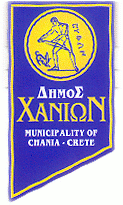CAMPIELLO: Campiello - interacting in collaborative environments to promote and sustain the meeting between inhabitants and tourists

Contract Information
Programme: FOURTH FRAMEWORK PROGRAMME Programme Acronym: ESPRIT 4 Contract Type: PREPARATORY, ACCOMPANYING AND SUPPORT MEASURES Start Date: 1997-09-01 End Date: 2000-08-31 Contract No: 25572 Role for TUC/MUSIC: Contractor Funding for TUC/MUSIC: 345000.0 Euros Principal Investigator for TUC/MUSIC: Stavros Christodoulakis
Project Information
Project Description
The Campiello project aims at:
- supporting the dynamic exchange of information and experiences between the communities of people living in historical cities of arts and culture and external -often foreign- visitors, using the local cultural resources and the events organised in the local context as triggers;
- enabling people to interact and cooperate in building a new richer sense of community based on exchange of knowledge, sedimented over the cultural resources;
- breaking the relegation of the local communities within historical cities of arts and culture, allowing them to reconnect with their territory.
In other words, the approach of the project is to support four main activities:
- Participation: facilitate the dialogue between the local community and its institutions (i.e., the cultural managers) to build a collaborative cultural resources management;
- Exchange: stimulate interactive processes which allow the meeting and exchange of different cultures: the local community and the community of visitors;
- Valorisation: allow, through the collective participation in organising cultural events, to optimise the access to the cultural resources;
- Promotion: spread information and knowledge about the local community filtered by the direct experience of the visitors that act as a "reporters/promoters"
Objectives
People living in Historical Cities of Arts and Culture (e.g., Venezia, Florence, Delphi, etc.) risk to be "foreigners" within their own cities: they must share their cultural resources (e.g., museums, libraries, etc.), their public utilities, as well as the places in which they meet and socialise (e.g., streets, squares, restaurants, bars, etc.) with visitors from other countries, and they may feel that the territory of their community is "occupied" by foreigners. Moreover, the new events organised within these cities are directed to tourists and not to the people living there; in fact, local people do not have any priority in participating in these events, and they rarely contribute to their organisation. There is the risk that "folk" events with ancient tradition, such as the Carnival or the Historical Regatta in Venezia, could be more and more ignored by the local people. In some cases, the local community of historical cities also see the "strangers" as people that contaminates their culture, using and ruining their properties, like undesirable persons within their own house. On the other hand, the visitors accessing only the most visible and renowned resources (the most famous museums or known parts of the city) gain only a superficial understanding of the local culture. They have often only a "commercial" relation with the local community. We believe that this negative trend characterising the interaction between local people and tourists could be reversed creating new "meeting places" and revitalising social roles, developing strategies and support for the transformation of foreigners into guests.
The Campiello project aims to experiment the use of innovative ICT to develop new links between the local communities and the visitors of the Historical Cities of Art and Culture. Two cities have been chosen as context of the experiment: Venezia in Italy and Chania in Crete (Greece).
Venezia and Chania on the one hand share some features that allow to develop the experiment in an integrated way - they have antique linkages and they have similar antique urban structures; on the other, exhibit differences making the two experiments individually interesting - Venezia is a small metropolis while Chania is a small town; Venezia needs for a regulation of the tourist invasion while Chania still can increase the number of tourists visiting it.
Structure and Functionality of the CAMPIELLO systemCampiello will realise an heterogeneous multimedia, multi-interfaces network. The project will develop:
The Actors Involved
- a system to support the information flow and the processes between the different actors involved within a defined physical environment.
- appropriate interaction paradigms adapted to the specific users, content and physical environment of Historical Cities of Art and Culture.
Figure 1: The actors involvedThe actors involved in the process of exchange and building of knowledge in the local context are:
The System
- the local community: people living within the territory of Historical Cities of Arts and Culture and their existing aggregates (schools, cultural associations, ...);
- the cultural managers: people organising events exploiting the local cultural resources (e.g., museum and theatre directors, cultural managers of the municipality, managers of the various Biennale programs, ...);
- the visitors: people like tourists, external to the local community, coming from other communities, visiting the city for a brief period of time;
- the potential visitors: people living all over the world potentially interested in receiving information on the Historical Cities of Arts and Culture.
The proposed system is based on a multimedia high band net, connected to Internet and based on Intranet and Web technologies, integrated with the following components:
- a shared information environment to support the relations between the different actors, and the creation of a common knowledge base, to maintain the history of the interactions, to enhance the participation, the communication and the exchange of information among people;
- a collaborative space that is the virtual place for cooperation within the local community: representations and metaphors to visualise the community, the participants, the information, the patterns of relations;
- various "interaction devices" (or access terminals) for individual or collective use, strongly integrated in physical environments, easy to use by heterogeneous users (citizens, elderly, students, visitors);
- a knowledge base.
In developing the system we will make use of the following technologies:
- ubiquitous computing technologies:
- intelligent bar-codes, multimedia knowledge bases, hypermedia-based electronic publishing;
- social computing technologies:
- communication and cooperative support system, information retrieval technologies, multi-lingual comprehension aids.
In the following the main characteristics of the four components of the system are synthesised.
Figure 2: The structure of the system
Project Publications
(2) Design of a System for the Development of Interactive Geographic Applications
Publication Authors: Moumoutzis N., Christodoulakis S.
Publication Info: M.Eng. Thesis, Technical University of Crete 1998
Publication Type: M.Sc. Theses(1) Issues on Using Visual Media with Modern Interaction Devices
Publication Authors: Christodoulakis S., Margazas T., Moumoutzis N.
Publication Info: Workshop in ACM CHI-98 Conference, Los Angeles, 1998
Publication Type: Workshop Proceedings
Project Downloads
Project Consortium

CMR
CONSORZIO MILANO RICERCHEΙΤ 
DA
Domus Academy SrlΙΤ 
FORTHnet
Hellenic Telecommunications and Telematics Application CompanyEL 
RXRC
Rank Xerox Research Center - Grenoble LaboratoryFR 
N/A
Municipality of ChaniaEL





